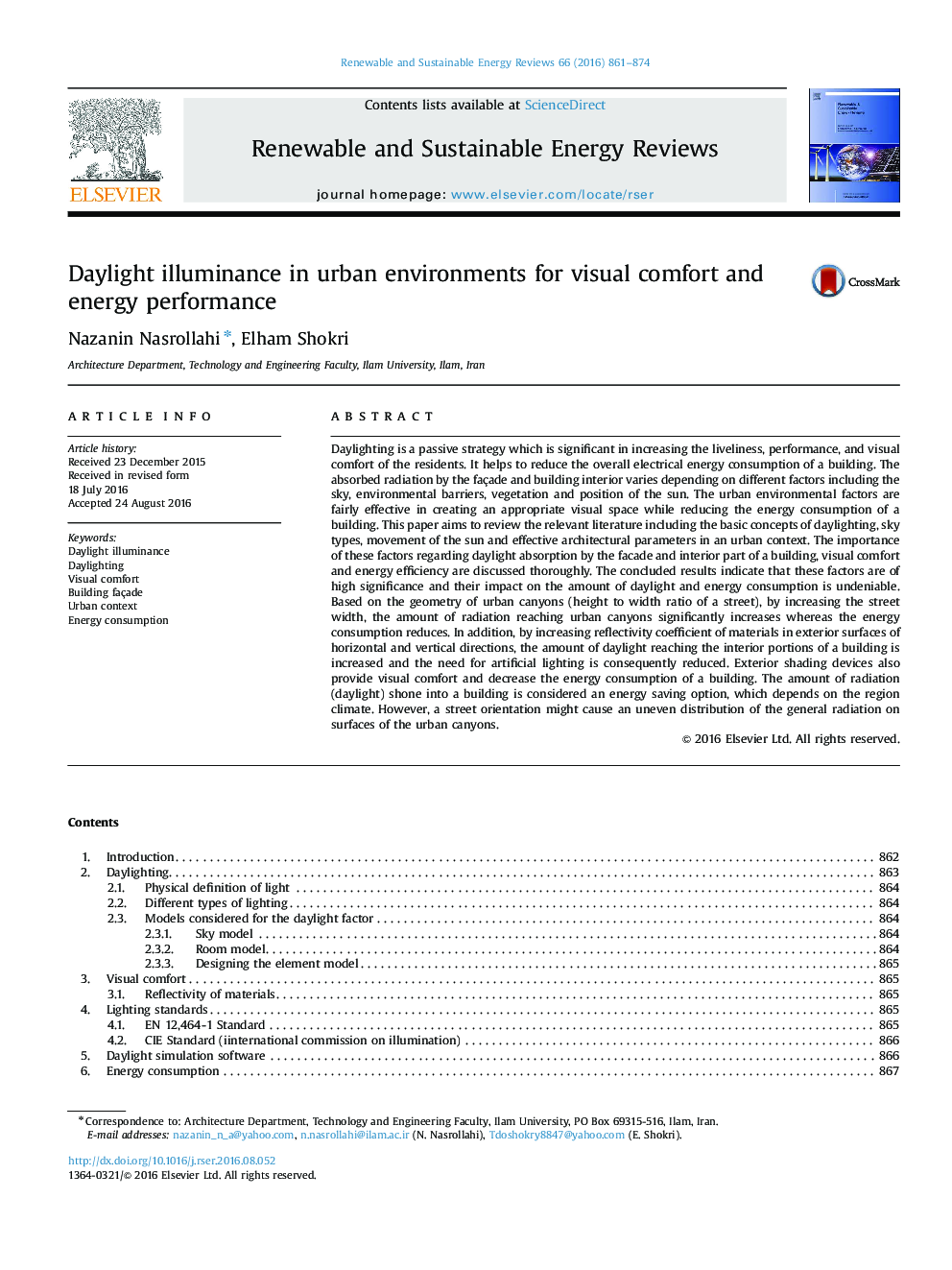| Article ID | Journal | Published Year | Pages | File Type |
|---|---|---|---|---|
| 8112862 | Renewable and Sustainable Energy Reviews | 2016 | 14 Pages |
Abstract
Daylighting is a passive strategy which is significant in increasing the liveliness, performance, and visual comfort of the residents. It helps to reduce the overall electrical energy consumption of a building. The absorbed radiation by the façade and building interior varies depending on different factors including the sky, environmental barriers, vegetation and position of the sun. The urban environmental factors are fairly effective in creating an appropriate visual space while reducing the energy consumption of a building. This paper aims to review the relevant literature including the basic concepts of daylighting, sky types, movement of the sun and effective architectural parameters in an urban context. The importance of these factors regarding daylight absorption by the facade and interior part of a building, visual comfort and energy efficiency are discussed thoroughly. The concluded results indicate that these factors are of high significance and their impact on the amount of daylight and energy consumption is undeniable. Based on the geometry of urban canyons (height to width ratio of a street), by increasing the street width, the amount of radiation reaching urban canyons significantly increases whereas the energy consumption reduces. In addition, by increasing reflectivity coefficient of materials in exterior surfaces of horizontal and vertical directions, the amount of daylight reaching the interior portions of a building is increased and the need for artificial lighting is consequently reduced. Exterior shading devices also provide visual comfort and decrease the energy consumption of a building. The amount of radiation (daylight) shone into a building is considered an energy saving option, which depends on the region climate. However, a street orientation might cause an uneven distribution of the general radiation on surfaces of the urban canyons.
Keywords
Related Topics
Physical Sciences and Engineering
Energy
Renewable Energy, Sustainability and the Environment
Authors
Nazanin Nasrollahi, Elham Shokri,
